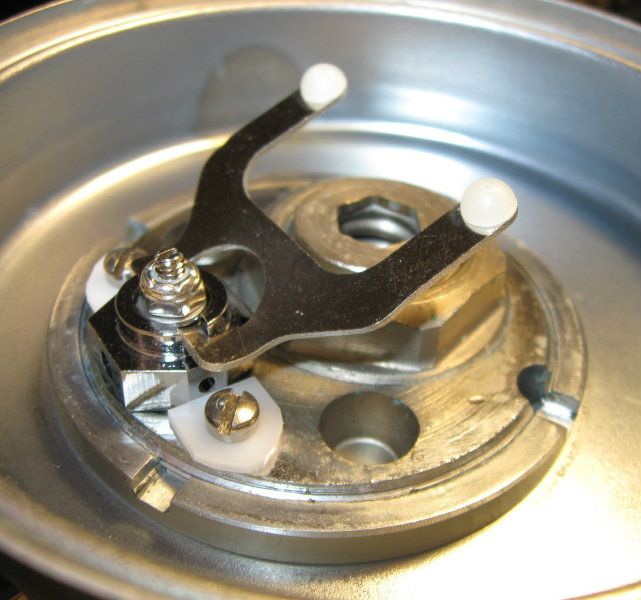Thanks guys.
BTW, with that rig, I technically had two hoses: the umbilical and the hose to the bailout tank.

---------- Post added April 23rd, 2012 at 11:04 PM ----------
Installing the HPR second stage.
My understanding is that Bryan is shipping the second stage assembled, but without the lever in place. The lever can be installed by pushing the seat carrier in and slipping the lever between the two washers. The only issue is that you can install the lever in two positions, 180 degrees from each other.
So here is a detailed step by step procedure to determine which nozzle port should be pointing down the horn as your venturi port. It looks like a lot of steps, but once you read it, you will see that the whole process can take less than 5 minutes (before you can go diving).
1) When you receive the HPR take it completely apart noticing the direction of the two washers.
2) Screw the (empty) second stage body into the regulator until it bottoms out.
3) Back it up until the first nozzle (large hole) points down the horn. This will be your venturi port.
4) Mark that port with either a permanent marker or something you can erase (or a small piece of tape, your choice.
5) Assemble second stage (seat holder, spring, second stage body, two washers, and nut), but only screw down nut a couple of threads. Make sure rounded faces of washers are facing each other.
6) Push seat holder into second stage body (against spring) and insert lever between the washers. The lever should point away from the selected venturi port.
7) Screw nut down until the screw driver slot is completely exposed.
8 ) Lift lever vertically (as shown in picture above) and screw HPR into regulator.
9) Adjust lever height (as shown in pictures above).
10) Test regulator performance. Check and adjust IP if needed.
11) After testing, install the two locking screws with the washers. Note: only one locking washer and screw is needed, but it doesnt look as finished with the empty screw hole.
12) Go diving
I hope this is clear.
Change: I changed the bullets form to numbers in order to make it easier to identify the steps. It will also make it easier if anyone has questions about a specific step.
Note: Steps 5 and 6 can be combined into a single step were you assemble the unit with the lever in place between the two washers.
I personally find it easier to slide the lever between the washers after the initial assembly (assuming the nut is has just been treaded about two or three turns). Which method you use is a personal preference.
---------- Post added April 24th, 2012 at 07:07 AM ----------
In response to a question at VDH about step 10:
The IP should not need to be changed, but it is always a good idea to check it whenever you are making changes to a regulator. That is the reason I said adjust if needed.
The original second stage might have required a very high IP in order to get it to perform.
In the past I have used IP of 150 psi or higher in some RAM and the original Phoenix RAM.
The new HPR second stage works well without the need of very high IP. Therefore, if you have previously adjusted the IP up around 150 psi (or even higher), you may want to bring it back to a normal range around 130 to 140 psi.





